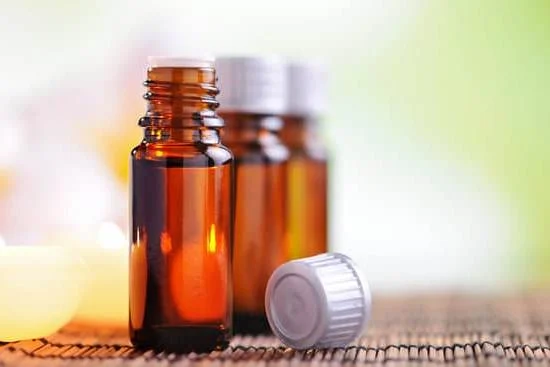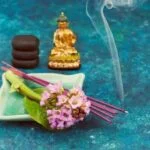Aromatherapy essential oils have gained popularity in recent years as a natural remedy for various ailments. These concentrated plant extracts can be used in a variety of ways, including through inhalation, ingestion, and topical application. In this article, we will explore the use of aromatherapy essential oils specifically on the body.
Aromatherapy essential oils can be used on a person’s body to promote relaxation, relieve stress, alleviate pain and inflammation, improve skin health, and enhance overall well-being. When used correctly, these oils can provide numerous benefits for both the physical and mental aspects of health.
Before using aromatherapy essential oils on the body, it is important to understand how to do so safely and effectively. This includes knowing how to properly dilute the oils, as well as being aware of any potential risks or adverse reactions.
In addition, it is crucial to consider different methods of application and which essential oils are best suited for body use. In the following sections, we will delve further into these topics to provide a comprehensive guide for incorporating aromatherapy essential oils into your body care routine.
Understanding the Benefits of Aromatherapy Essential Oils for the Body
Aromatherapy essential oils are natural, plant-based oils that harness the therapeutic properties of various plants and herbs. These oils are extracted from different parts of the plants including flowers, leaves, bark, and roots. When used on the body, aromatherapy essential oils can have a range of benefits for physical and mental well-being.
One of the key benefits of using aromatherapy essential oils on the body is their potential to promote relaxation and reduce stress. Certain essential oils such as lavender, chamomile, and ylang-ylang are known for their calming properties which can help alleviate feelings of anxiety and tension. Additionally, these oils can also be used in massage therapy to soothe tired muscles and promote overall relaxation.
In addition to promoting relaxation, aromatherapy essential oils can also be used to improve skin health. Many essential oils have antibacterial, anti-inflammatory, or antiseptic properties that make them useful for treating various skin conditions.
For example, tea tree oil is often used as a natural remedy for acne due to its antimicrobial properties, while chamomile oil can be soothing for irritated or inflamed skin. Furthermore, the use of these oils in skincare routines can help nourish and rejuvenate the skin.
It is important to note that when using aromatherapy essential oils on the body, they should always be diluted with a carrier oil to prevent any adverse reactions such as irritation or sensitization. This ensures that the concentrated essential oil is safe for direct application on the skin.
Dilution ratios will depend on factors such as age and skin sensitivity. Always perform a patch test before applying any new essential oil to the body to check for any potential allergic reactions.
Safety Precautions When Using Aromatherapy Essential Oils on the Body
Aromatherapy essential oils are highly concentrated plant extracts that have been used for centuries to promote health and well-being. When using these oils on the body, it is important to take safety precautions to prevent any adverse reactions. Here are some important safety tips to keep in mind when using aromatherapy essential oils on the body:
- Perform a patch test: Before applying any essential oil to a larger area of the body, it is crucial to perform a patch test to check for any allergic reactions or sensitivities. Dilute the essential oil in a carrier oil and apply a small amount to the skin. Wait 24 hours to see if there is any redness, itching, or irritation.
- Avoid certain oils: Some essential oils are not suitable for use on the skin, especially for those with sensitive skin or certain medical conditions. Oils such as cinnamon, clove, and oregano can be too harsh and may cause irritation.
- Follow proper dilution guidelines: Essential oils are potent and should always be diluted before applying them to the body. Follow recommended dilution ratios based on the specific oil and intended use.
When using aromatherapy essential oils on the body, it is important to exercise caution and follow safety guidelines to avoid any adverse reactions or harm. By taking these precautions, individuals can enjoy the benefits of aromatherapy without risking their well-being.
- Keep out of reach of children: Essential oils should always be kept out of reach of children as they can be toxic if ingested.
- Seek guidance from a professional: If you are unsure about using a particular essential oil or have underlying health concerns, it is best to seek guidance from a qualified aromatherapist or healthcare provider.
Different Methods of Applying Aromatherapy Essential Oils to the Body
Aromatherapy essential oils have been used for centuries to promote physical and emotional well-being. When it comes to using these oils on the body, there are several methods of application that can be utilized to reap their benefits. One common method is topical application, where the oils are applied directly to the skin. This can be done through massage, baths, or simply by rubbing the oil onto the skin.
Another popular way to use aromatherapy essential oils on the body is through inhalation. This can be achieved by adding a few drops of oil to a bowl of hot water and inhaling the steam, or by using a diffuser to disperse the scent throughout a room. Inhaling essential oils can have a direct impact on mood and emotions, making it an effective method for promoting relaxation and reducing stress.
It’s important to note that not all essential oils are safe for topical use, as some can cause skin irritation or other adverse reactions. It’s crucial to dilute the oils properly before applying them to the skin, especially for those with sensitive skin or allergies.
Additionally, certain essential oils should be avoided during pregnancy or when dealing with certain health conditions. Always consult with a qualified aromatherapist or healthcare professional before using essential oils on your body to ensure safety and effectiveness.
| Method of Application | Description |
|---|---|
| Topical Application | Oils are applied directly to the skin through massage, baths or rubbing |
| Inhalation | Oils are inhaled through steam or diffusion for mood and emotion benefits. |
| Safety Precautions | Always dilute and check for allergens before use. |
Top 5 Aromatherapy Essential Oils for Body Use
Aromatherapy essential oils are widely used for their various health and wellness benefits. When it comes to utilizing these oils on the body, it is important to choose the right ones for the desired effect. Here are the top 5 aromatherapy essential oils for body use:
- Lavender: Known for its calming and soothing properties, lavender essential oil is often used to promote relaxation, alleviate anxiety, and reduce stress. It can also help with minor skin irritations and promote better sleep.
- Peppermint: Peppermint essential oil is popular for its cooling sensation and invigorating scent. It can be used to relieve muscle aches, headaches, and improve mental focus and clarity.
- Tea Tree: With its antimicrobial and anti-inflammatory properties, tea tree essential oil is great for treating acne, soothing minor skin irritations, and supporting overall skin health.
- Eucalyptus: Eucalyptus essential oil is commonly used to ease respiratory issues such as congestion and coughs. It also has analgesic properties that can help alleviate muscle pain and inflammation.
- Chamomile: Known for its gentle nature, chamomile essential oil is perfect for sensitive skin. It has anti-inflammatory effects that can soothe skin conditions like eczema, dermatitis, and rashes.
When using aromatherapy essential oils on the body, it is vital to dilute them properly before applying them topically. This helps prevent skin irritation or adverse reactions. Essential oils are highly concentrated substances that should never be applied directly onto the skin without dilution.
- Mixing a few drops of essential oil with a carrier oil such as coconut oil, almond oil, or jojoba oil effectively reduces their potency while still allowing their beneficial properties to be absorbed by the skin.
- A general rule of thumb is to use about 3-5 drops of essential oil per teaspoon of carrier oil for adults. For children or those with sensitive skin, it’s best to use even fewer drops of essential oil per teaspoon of carrier oil.
- It’s also important to perform a patch test before widespread use of any new essential oil on your body. This helps determine if you have any allergic reactions or sensitivities to a particular oil.
In addition to topical application on the body through diluted mixtures, some people may also incorporate aromatherapy essential oils into their massage therapy sessions. The combination of touch therapy from massage along with the aromatic benefits of these oils can provide an enhanced sense of relaxation and well-being.
When considering using aromatherapy essential oils on your body whether through topical application or in massage therapy settings, it’s important to be aware of potential risks including allergic reactions or sensitivities to specific oils. Always consult with a healthcare professional or certified aromatherapist if you have any concerns or underlying health conditions that may impact your ability to safely use these oils on your body.
How to Dilute Aromatherapy Essential Oils for Body Use
When using aromatherapy essential oils on the body, it is important to dilute them properly to ensure safety and avoid any potential skin irritation. Undiluted essential oils can be too potent for direct application to the skin and may cause adverse reactions. Diluting essential oils not only reduces the risk of skin sensitivity but also helps the oil spread evenly over the skin.
Choosing a Carrier Oil
One of the most common methods of diluting essential oils for body use is by mixing them with a carrier oil. Carrier oils are neutral oils that can help “carry” the essential oil onto the skin. Examples of carrier oils include coconut oil, almond oil, jojoba oil, and olive oil. Each carrier oil has its own benefits and properties, so it’s important to choose one that complements the specific essential oil being used.
Proper Dilution Ratios
The proper dilution ratio for combining essential oils with a carrier oil is generally 1-2%. This means that for every 1 teaspoon of carrier oil, you would add 1-2 drops of essential oil. However, some essential oils are more potent than others and may require even greater dilution. It’s important to do research on each individual essential oil before determining the appropriate dilution ratio.
Testing for Sensitivity
Before applying any diluted blend of aromatherapy essential oils to a larger area of your body, it’s crucial to perform a patch test on a small area of skin first. This can help identify any potential allergic reactions or sensitivities to specific essential oils or their dilutions.
Simply apply a small amount of diluted blend to the inside of your forearm and wait 24 hours to see if any redness, itching, or irritation occurs. If no reaction is present, then it should be safe to use on other areas of your body.
By understanding proper dilution methods and taking necessary precautions, aromatherapy essential oils
Aromatherapy Essential Oils and Massage Therapy
Aromatherapy is a holistic healing treatment that uses natural plant extracts to promote health and well-being. When these essential oils are used in combination with massage therapy, it can enhance the overall experience and provide numerous benefits for the body and mind.
Benefits of Aromatherapy Essential Oils in Massage Therapy
The use of aromatherapy essential oils in massage therapy offers a wide range of benefits. These oils can help reduce stress, alleviate muscle tension, improve circulation, and promote relaxation. Additionally, specific essential oils such as lavender, chamomile, and peppermint have been found to have analgesic properties that can help relieve pain and discomfort during massage therapy.
Methods of Incorporating Aromatherapy Essential Oils Into Massage Therapy
There are several methods for incorporating aromatherapy essential oils into massage therapy. The most common method is to dilute the essential oil with a carrier oil and apply it directly to the skin during the massage. Another method is to diffuse the essential oils in the room where the massage is taking place, allowing the client to inhale the aroma during their session.
Potential Risks and Considerations
While aromatherapy essential oils can provide numerous benefits when used in conjunction with massage therapy, it’s crucial to consider potential risks and safety precautions. Some essential oils may cause skin irritation or allergic reactions in some individuals. It’s important to perform a patch test before using any new essential oil on a client’s body and ensure they don’t have any pre-existing conditions that could be aggravated by certain oils.
Potential Risks and Considerations When Using Aromatherapy Essential Oils on the Body
In conclusion, aromatherapy essential oils have been used for centuries to promote physical and mental well-being. As discussed in this article, the benefits of using aromatherapy essential oils on the body are numerous, including stress reduction, pain relief, and improved skin health. However, it is essential to take safety precautions when using these oils, as they are potent and can cause harm if not used properly.
When using aromatherapy essential oils on the body, it is crucial to dilute them properly and be aware of any potential risks or considerations. Different methods of applying these oils to the body were also discussed in this article, such as through massage therapy or topical application. It is important to always follow guidelines and instructions for proper usage to ensure safety and effectiveness.
While there are potential risks associated with using aromatherapy essential oils on the body, when used responsibly and with caution, they can be a valuable tool for promoting health and wellness. When in doubt, it is advisable to seek guidance from a qualified aromatherapist or healthcare professional. By being mindful of safety precautions and making informed choices, aromatherapy essential oils can indeed be used effectively on a person’s body to enhance overall well-being.
Frequently Asked Questions
Can You Use Aromatherapy Essential Oils on Your Body?
Yes, you can use aromatherapy essential oils on your body. However, it is important to dilute the essential oils with a carrier oil before applying them to the skin to avoid irritation or allergic reactions.
Is Aromatherapy Safe for Humans?
Aromatherapy is generally safe for humans when used properly and in moderation. However, some individuals may be sensitive or allergic to certain essential oils, so it’s important to do a patch test before using them extensively.
Are Essential Oils Safe for Human Skin?
While essential oils can have benefits for the skin, it’s essential to use caution when applying them directly. Some essential oils may cause irritation or sensitivity in certain individuals, so it’s crucial to dilute them properly and be aware of any potential skin reactions.

Are you looking for a natural way to improve your health and wellbeing?
If so, aromatherapy may be the answer for you.






